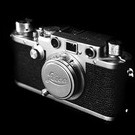Why are Leica using less aperture blades on newer designs?
-
Recently Browsing 0 members
- No registered users viewing this page.
-
Similar Content
-
- 19 replies
- 744 views
-
- 12 replies
- 745 views
-
- 20 replies
- 1,035 views
-
Why Leica Looks? 1 2 3 4
By mrkennethtong,
- 72 replies
- 5,404 views
-
"The 50mm Summilux ASPH was Designed to Front Focus" <-- Leica NJ Technician. Thoughts? 1 2 3 4 7
By eyeheartny,
- 126 replies
- 8,966 views
-






Recommended Posts
Join the conversation
You can post now and register later. If you have an account, sign in now to post with your account.
Note: Your post will require moderator approval before it will be visible.